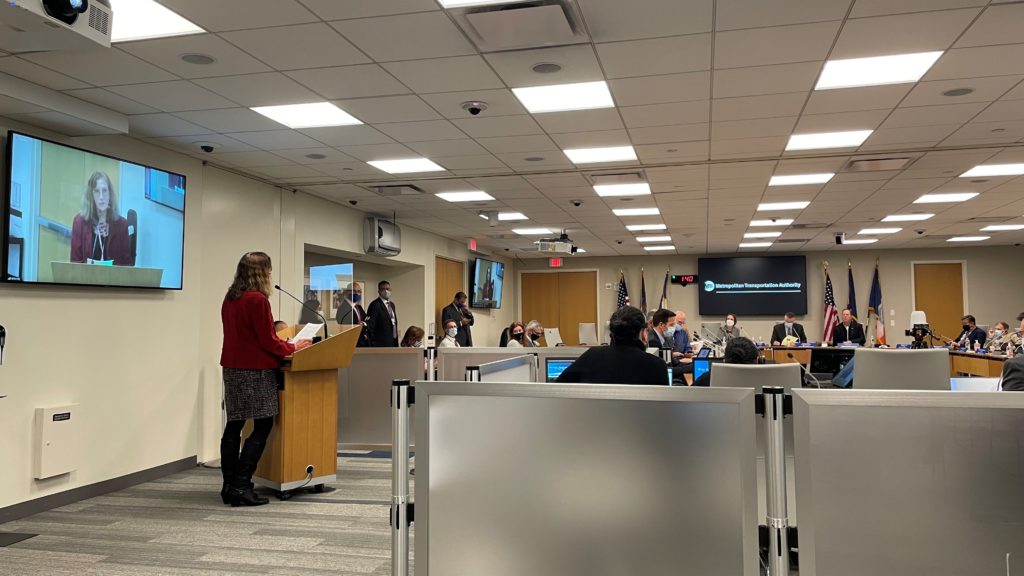Good morning! I’m Lisa Daglian, Executive Director of the Permanent Citizens Advisory Committee to the MTA (PCAC). This morning I am going to share concerns we’ve heard from Metro-North and LIRR riders about insufficient service, slow rides, and standing-room-only cars; we know you’ve heard similar concerns.
Returning riders are counting on service that will get them where they need to go, especially as they head back to work. On Metro-North, we’re hearing a lot of concerns about long rides with lots of local stops. Riders are concerned that the service they are used to having is not running during rush hour, but during off peak hours – that “there is no ‘rush’ in rush hour.” Yes, Metro-North is still recovering from Ida, but the lack of good express service was an issue in the schedules that were released before her wrath.
And on the LIRR, we’re hearing about crowding in the early morning “trade trains” – to the point where some riders are standing the whole way inbound or are just giving up and driving. As commute patterns evolve, that can’t be the new normal: we must add capacity to existing trains or risk losing riders who would otherwise depend on the Rail Road.
We know that the railroads are still hurting from the pandemic, but it’s important to look to the future to entice back ridership. The agreement reached last week with New Jersey and Connecticut allows the MTA to apply for pandemic relief funds through the American Rescue Plan, and we believe they should be used to ensure sufficient service is running – enough trains and train cars, and service levels that are closer to pre-pandemic levels. This is the most important step to encourage riders to get back on board.
At a time when we desperately need riders, the worst thing we can do is disappoint those who do return with service that is worse than they experienced before the pandemic, or that makes them feel crowded or makes them late. We can’t afford to drive people to driving; we need them back on board. Let’s make sure that every rider’s post-pandemic experience is even better than they remembered, with more service, reliability, and capacity.
